Stitch & Tell Collection
Weaving Culture into Jewelry
Welcome to Stitch & Tell, a unique jewelry collection inspired by Surinamese stories. Each piece in this collection is more than just adornment; it's a story, a connection to our roots, and a celebration of identity. I'd like to share the inspiration behind each piece, but before I do that, let me tell you where I 'really' come from.
Hi, I'm Anouk, the one and only creator of Poppin' Patterns. I was born and raised in the Netherlands. I'm a real Dutchie, but my DNA and family customs & traditions make me Surinamese and Javanese too. This has led to some inner confusion, but art has always given me a path to understanding. I'd like to share that journey with you, starting at the beginning:
My Surinamese roots
Suriname has a rich history with indigenous origins, but also colonial roots. For centuries, the Netherlands was Suriname's colonizer. During the Trans-Atlantic slavery, the Dutch enslaved 550.000 African people, 200.000 of them were forced to work in Suriname. Most of them ended up working on plantations. These were big fields full of sugarcane, wood, coffee, cotton, cacao and indigo. Slavery in Suriname officialy ended on July 1st in 1863, though the enslaved people were still forced to work for another 10 years.
My creole identity is rooted in these colonial times. My last name, Vasilda, was brought into existence after one of my first family members was ransomed at the age of one. Her name was Lina Julia and in 1860 she became the first Vasilda: she was no longer enslaved. My uncle Milton Vasilda discovered her story and later he found a manumission, which is a document that states the freedom of someone who used to be enslaved. His discovery means so much to our family as do his further efforts to reveal more family stories.
My Javanese roots
While slavery was ending, the economy in Suriname was also in danger of ending. So a new system was set in place to supply the plantations with workforce, called indentured servitude or 'contract labour'. This was a system where people were recruited by deception and false promises to work on the Surinamese plantations. For example, they were promised that they would return as rich people and that the work would not be tough. The labourers had to sign a contract. After it was signed, they were obliged to work for plantation owners for 5 years. Therefore, there was no question of a contract termination, contrary to what we are used to today. If the contract workers did not comply with the requirements, they were severely punished or they were forced to work for more years.
Ten thousands of Chinese, Hindostani and Javanese people were forcibly recruited to Suriname. In 1858 the Chinese immigration started, Hindu immigration in 1873 and Javanese immigration in 1890. This system ended in 1939.
I have multiple Javanese ancestors who were a contract labourer. Saminah, my great-grandmother, was only 14 when she was kidnapped from Java. Her story has been an inspiration to create more awareness about the Surinamese-Javanese diaspora.
Back to jewelry: every piece of the Stitch & Tell collection has a backstory, either connecting to a collective or personal history, or both. Scroll down and discover the inspiration behind each piece!
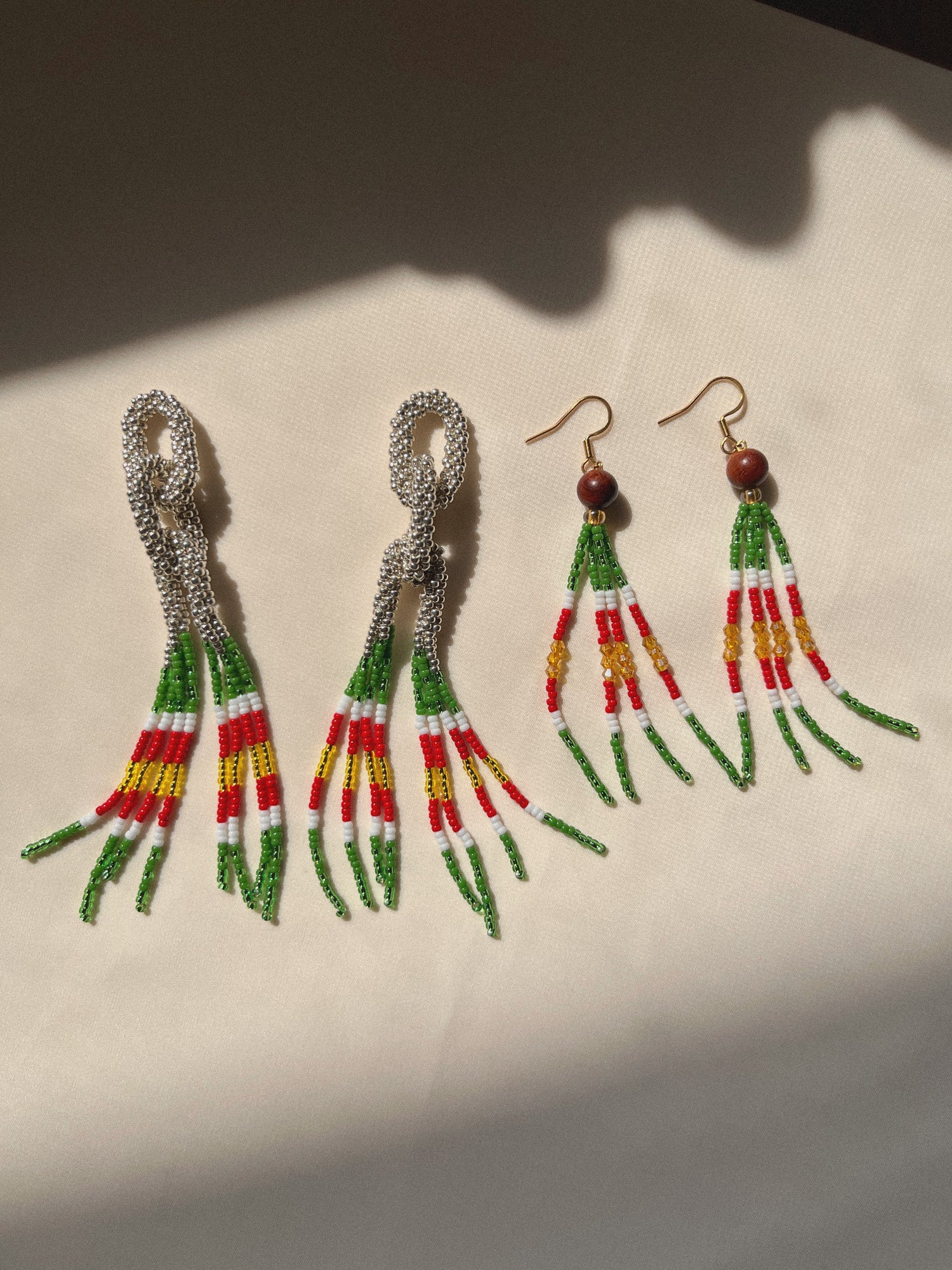
Keti Koti Earrings
Keti koti is the Emancipation Day of Suriname, celebrated annually on July 1. Keti koti means 'broken chains'. It refers to the shackles that held the enslaved African people captive. Slavery was abolished in Suriname on July 1, 1863. Unfortunately, the enslaved people still had to work on the plantations for 10 years. Flowing over into the Surinamese flag, these earrings represent country's path to independence.
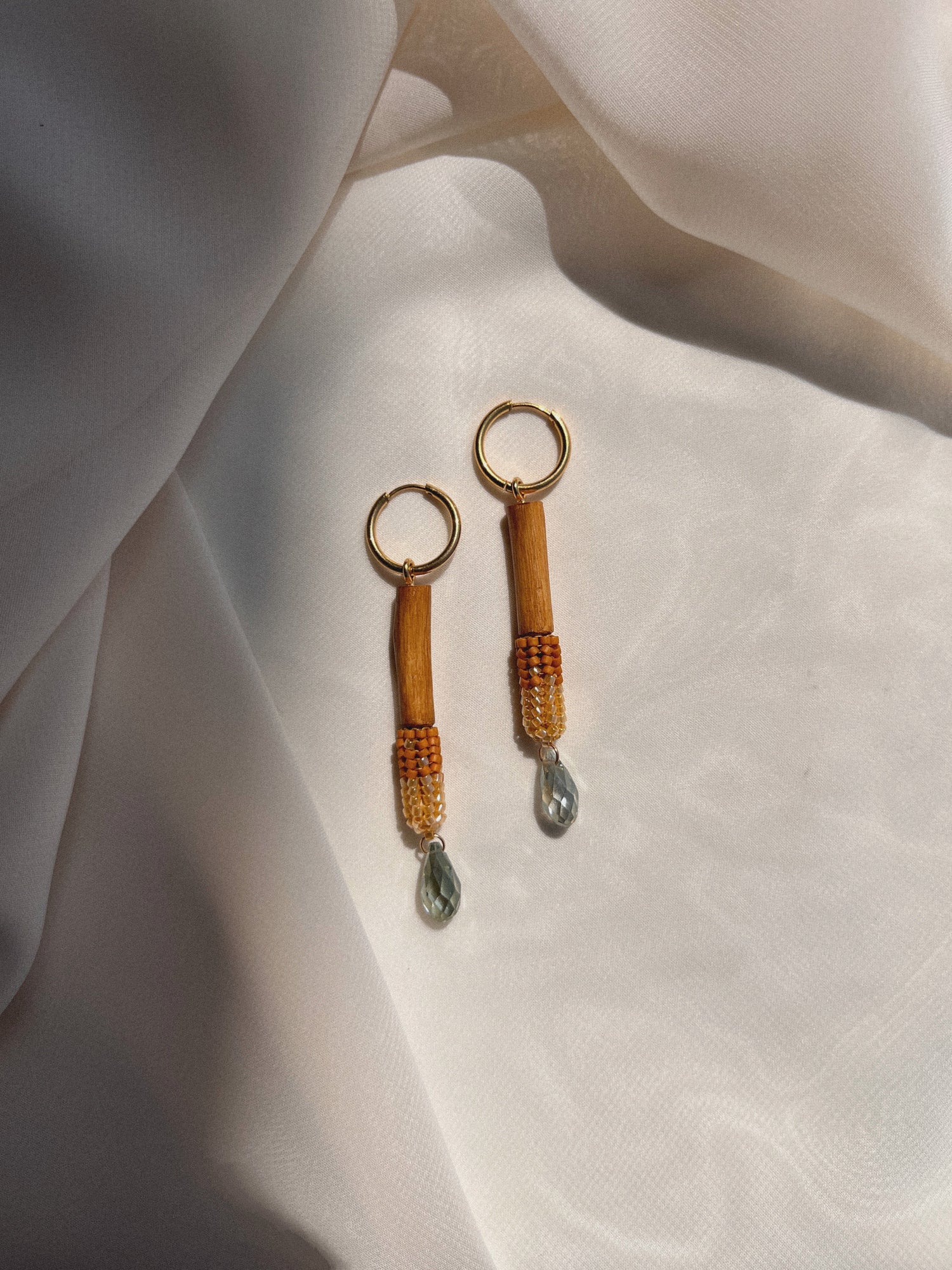
Tamarinde Earrings
When I was in Suriname last year, I visited the Mariënburg plantation with my family. We had a connection to this place because my great-grandmother Saminah worked here as a contract labourer. I made it my mission to take something home from Suriname to use for my work. And when I found the tamarind trees by chance on the Mariënburg plantation, I knew that this had to be the material.
Tamarind branches were also used as whips during slavery, making the history behind them extra sentimental.
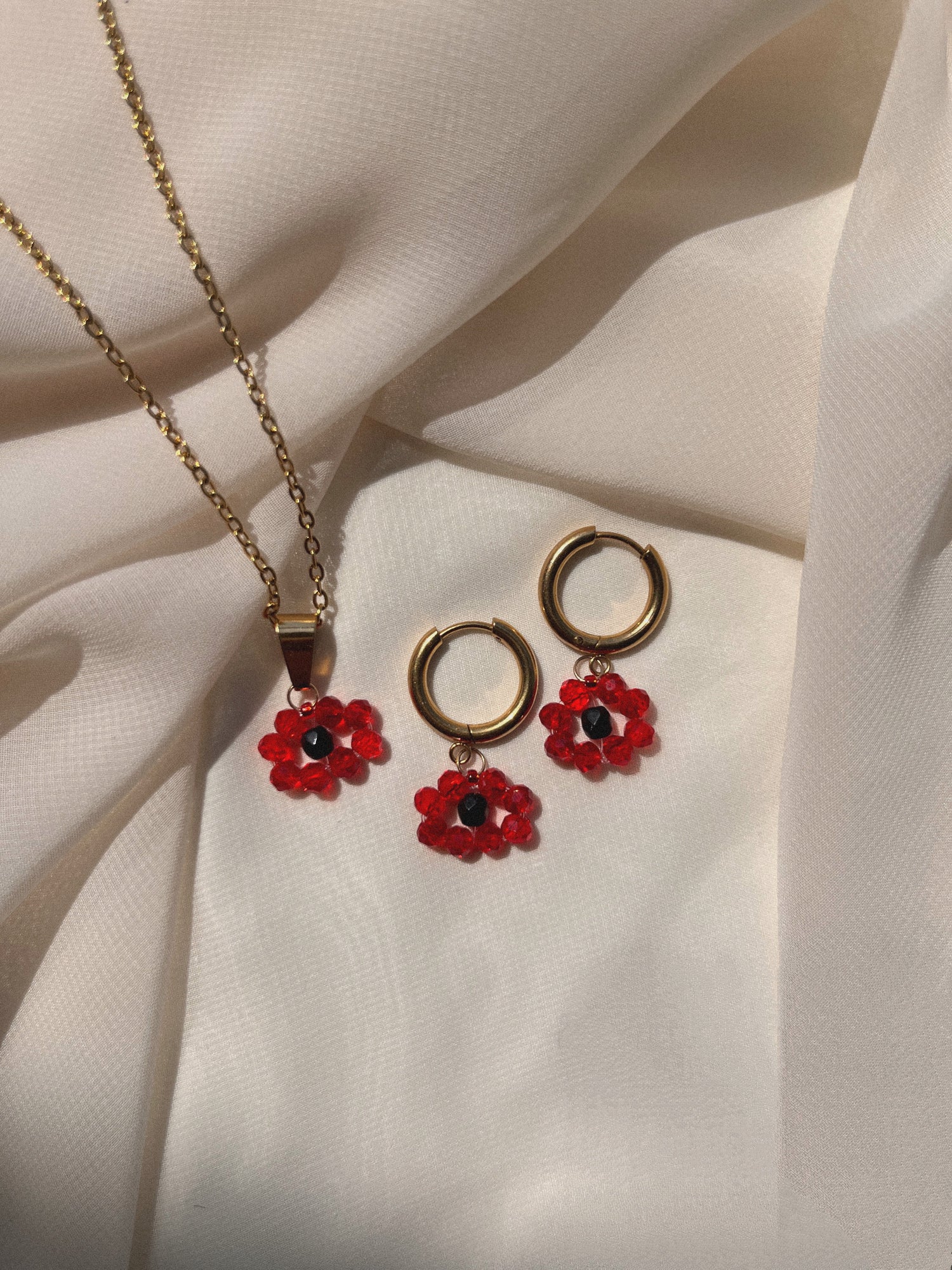
Ogri Ai Jewelry
The name resembles the English “angry eye”: the evil eye. The belief in the evil eye has long been known within different cultures and is still present worldwide. Wearing an amulet could provide protection against evil looks.
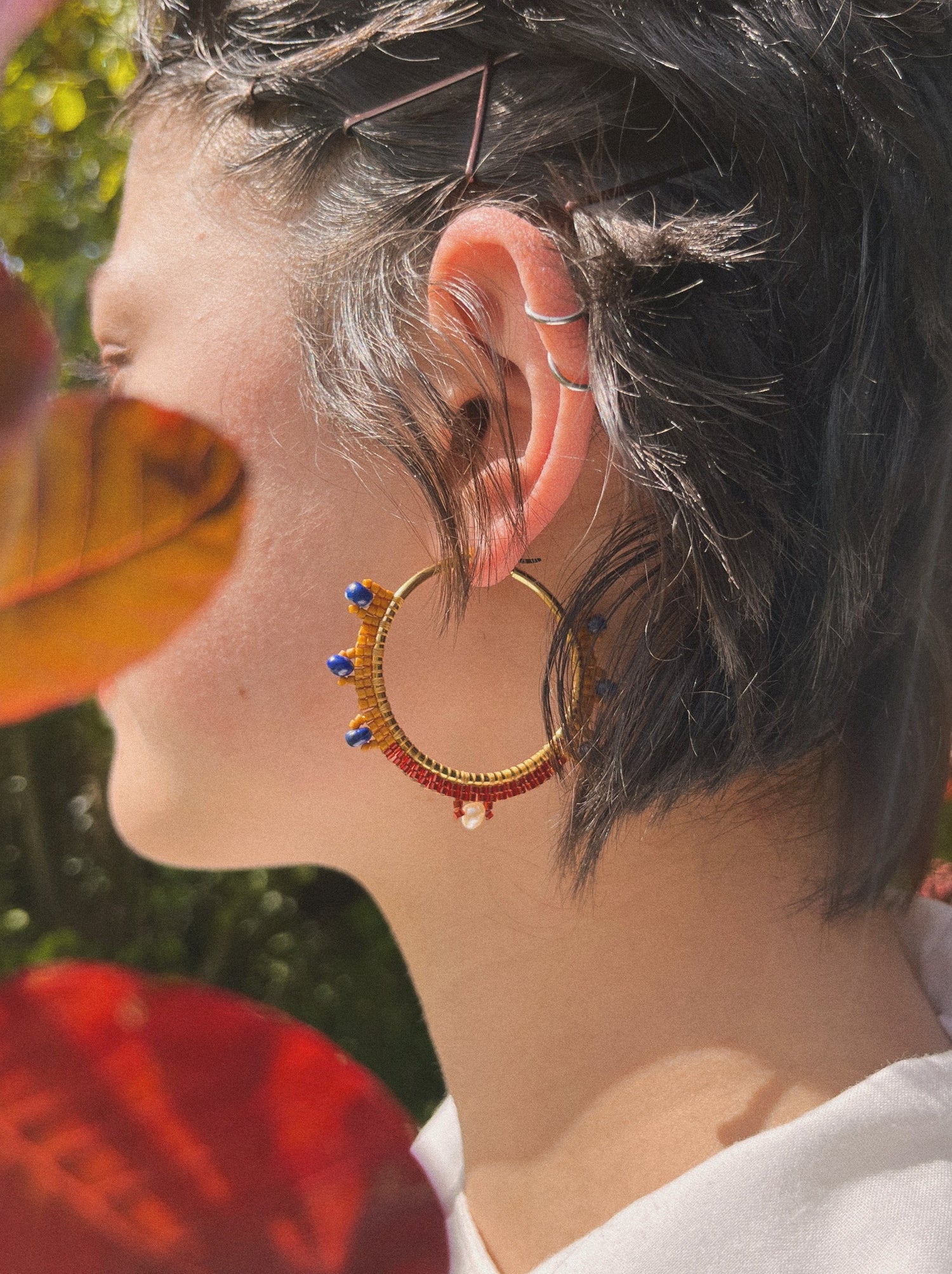
Wayang Hoops
The Wayang Hoops are inspired by the colors that are often seen in Javanese wayang and batik.
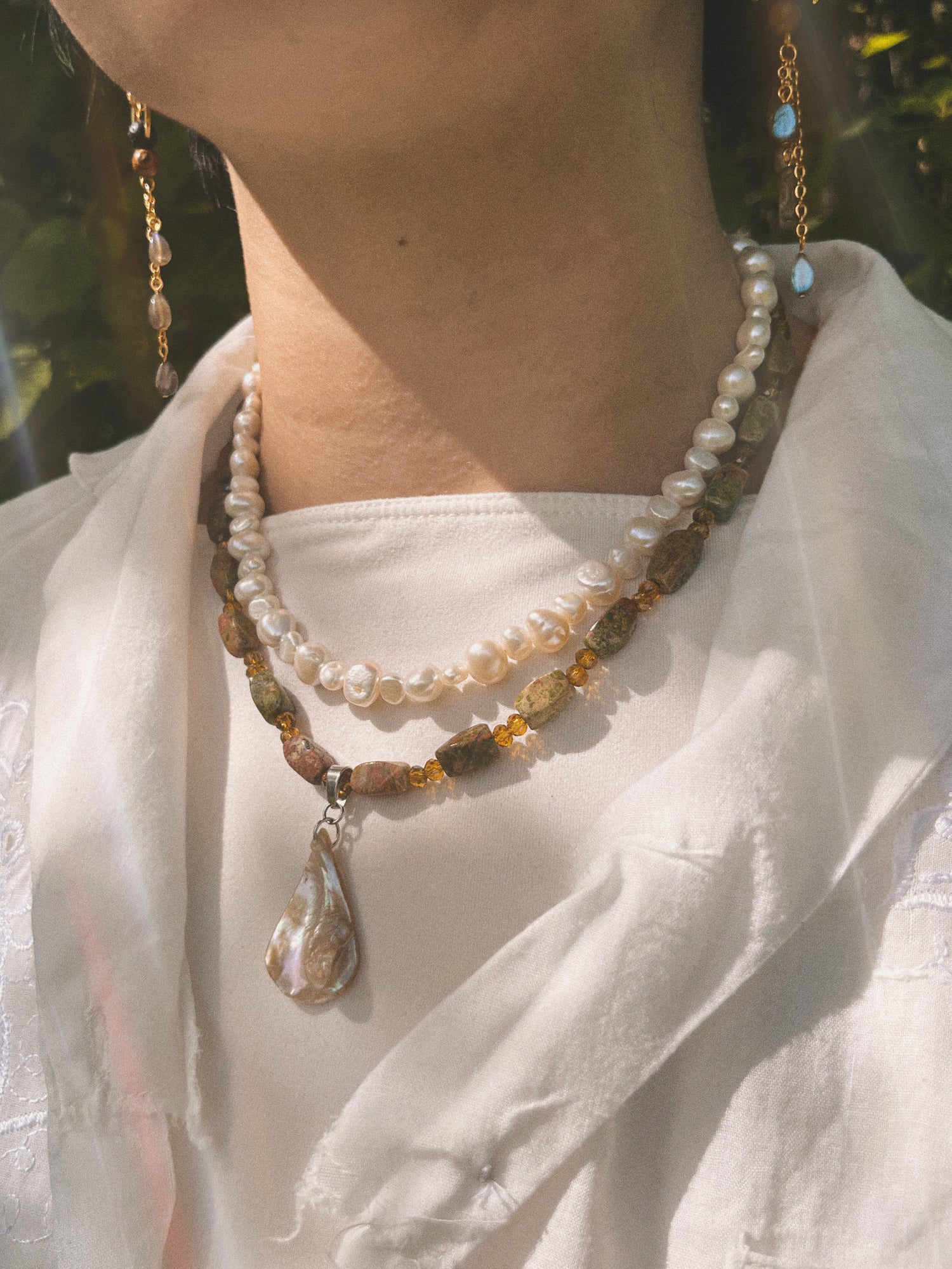
Firi Necklace
Meandering rivers, endless forests, sweet breezes and passionate rain. Firi, meaning feeling in Surinamese, is an ode to the beautiful landscape and climate of Suriname.
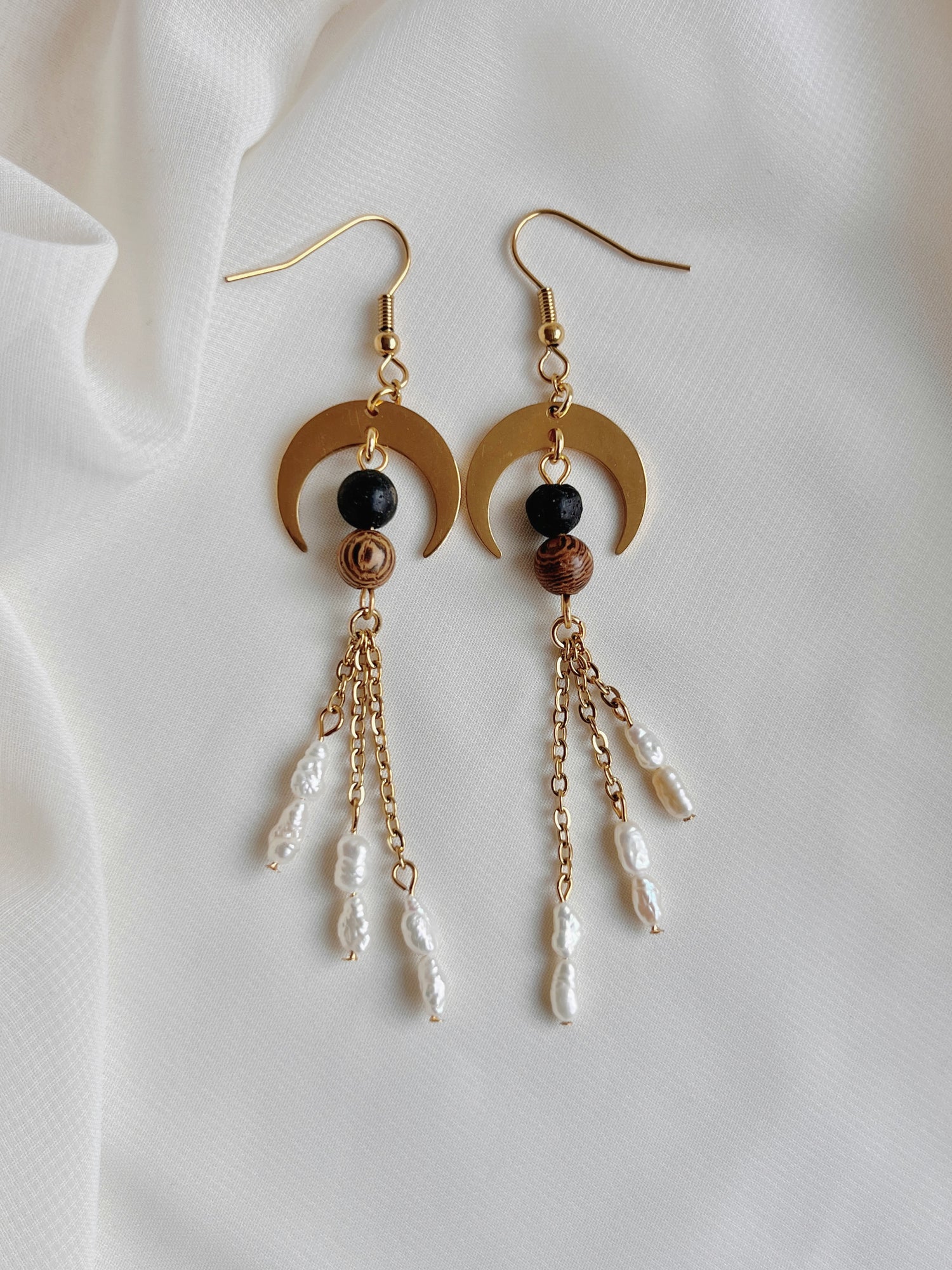
Mona Earrings
Inspired by Javanese batik. Batik means 'many dots' in Javanese and is a technique for decorating fabric using wax.
More Poppin' Collections
-

Glam Galore Collection
The Glam Galore collection combines youthful energy with a touch of elegance...




